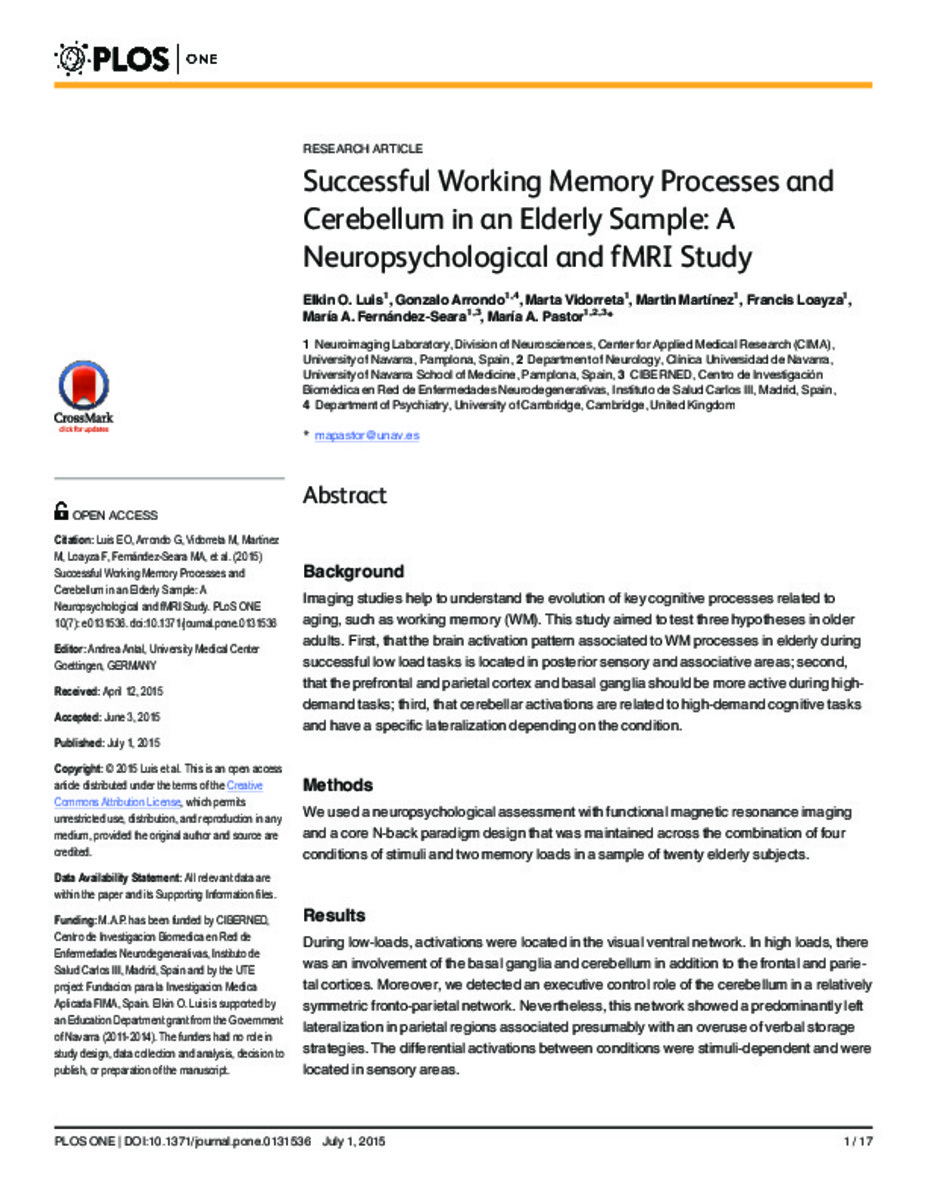Successful working memory processes and cerebellum in an elderly sample: A neuropsychological and fMRI study
Palabras clave :
Brain activation
Older adults
Cerebellar activations
Memory processes
Materias Investigacion::Ciencias de la Salud::Neurología
Fecha de publicación :
2015
Editorial :
Public Library of Science
Nota:
This is an open access article distributed under the terms of the Creative Commons Attribution License, which permits
unrestricted use, distribution, and reproduction in any medium, provided the original author and source are credited.
Cita:
Luis, E.O.; Arrondo, G.; Vidorreta, M.; et al. "Successful working memory processes and cerebellum in an elderly sample: A neuropsychological and fMRI study". Plos one. 10 (7), 2015, e0131536
Aparece en las colecciones:
Estadísticas e impacto
0 citas en

0 citas en

Los ítems de Dadun están protegidos por copyright, con todos los derechos reservados, a menos que se indique lo contrario.








